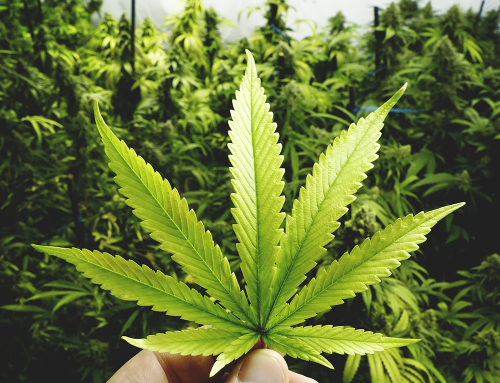Growing cannabis, like many plants, might seem a simple process in theory. In practice, it requires careful planning and selection of various elements of the grow operation. In addition to the challenges faced by cannabis growers, consumers should also be aware of what goes into the products they purchase and put into their bodies. Here we examine the difference between organically cultivated flower versus cannabis grown with synthetic nutrients.
What are Organic Nutrients?
Organic cultivation is traditionally associated with soil growing methods and entails feeding plants with animal or plant waste products or otherwise ‘natural’ substances such as rock dust. These nutrients accumulate in the soil where microbes and fungi break down the organic substances into their component elements. These are then absorbed by the roots of the plant and used to build its stems, leaves, and flowers. Organic cultivation primarily involves feeding the soil microbes with compost, worm castings, fish emulsions, manure, and other substances often found in the natural environment, especially places that are fertile and filled with dense, wild plant growth. A master organic cultivator is intimately familiar with soil dynamics, such as absorption rates for nutrients, microbial and fungal composition, biological balance, pest management, water drainage, and nutrient accumulation over time if the soil is reused for multiple harvest cycles.
Over the last few decades, some enterprising gardeners have experimented with cultivation systems involving a combination of organic nutrients with hydroponic watering systems. These are also known as bioponics, a process patented by a hydroponics veteran in 2005. Growing cannabis using organic hydroponic methods entails applying water to the lower portion of roots and organic nutrients to the upper portion of roots. This is because water is primarily absorbed by the lower roots of the cannabis plant whereas nutrients are mainly absorbed by the upper portion of the roots. This enables the water collection reservoir to be free of organic materials that would otherwise biodegrade and ferment over time, interfering with and contaminating the watering system. These methods are relatively new but are moving quickly into the mainstream as entrepreneurs strive to generate harvests – both cannabis and food crops alike – with lower input costs and higher quality product output.
What are Synthetic Nutrients?
Since the early 20th century when a German chemist learned how to make ammonia from nitrogen and hydrogen gas, farmers have learned how to achieve “better living through chemistry” by using synthetic nutrients to replace traditional organic soil additives. Chemically derived plant fertilizers, combined with modernized irrigation and mono-crop farming methods, were largely responsible for the massive boom in world population during the 20th century as more food was able to be generated from the same amount of land. Cannabis also can be cultivated using synthetic nutrients, some growers use chemical fertilizers on soil but more often chemical nutrients – Nitrogen, Phosphorous, Potassium – are used in hydroponic cultivation systems.
Synthetic nutrient solutions come in stable forms that won’t break down any further or interact with other hydroponic nutrients. This allows the nutrients, often composed of chemical salts, to circulate in the plant growing medium as well as the water channels and storage reservoir without biodegrading as would organic materials. As the plants absorb the synthetic nutrient and mineral solution, the concentration in the water (measured in parts per million) will decrease. The hydroponic system will add in the nutrients as they are used by the plants so they are always supplied with an optimal amount of each nutrient.
What’s the Difference?
Plants, like humans, are made of what they eat. When cannabis is lit up and inhaled all its components are released, combining with the air to generate potent aromas and flavors. Connoisseurs of cannabis flower will be able to identify – whether organic soil or synthetic hydro – if a nutrient or additive was used too late in the growth cycle and/or not allowed enough time to “flush” out from the plant during the final watering stages. Apples to apples, top-shelf organic soil-grown cannabis versus top-shelf conventional hydroponic cannabis, most consumers and aficionados of the herb will report that organic soil enables the cannabis plant to develop and exhibit the full spectrum and depth of its aroma as well as psychological and medicinal effects.
[TL;DR – Chemical fertilizers can grow lots of good-looking cannabis, but only organic soil lets the plant exhibit its full biological personality and medicinal properties.]






